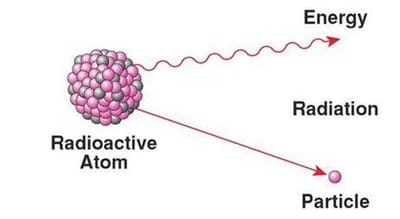Radioactivity

The list below gives some possible emissions:
- Alpha decay occurs when the nucleus ejects an alpha particle (helium nucleus).
- Beta decay occurs in two ways; beta-minus decay, when the nucleus emits an electron and an antineutrino in a process that changes a neutron to a proton and beta-plus decay, when the nucleus emits a positron and a neutrino in a process that changes a proton to a neutron, also known as positron emission.
- In gamma decay a radioactive nucleus first decays by the emission of an alpha or beta particle. The daughter nucleus that results is usually left in an excited state and it can decay to a lower energy state by emitting a gamma ray photon.
- In neutron emission, extremely neutron-rich nuclei, formed due to other types of decay or after many successive neutron captures, occasionally lose energy by way of neutron emission, resulting in a change from one isotope to another of the same element.
- In electron capture, the nucleus may capture an orbiting electron, causing a proton to convert into a neutron in a process called electron capture. A neutrino and a gamma ray are subsequently emitted.
- In cluster decay and nuclear fission, a nucleus heavier then an alpha particle is emitted.